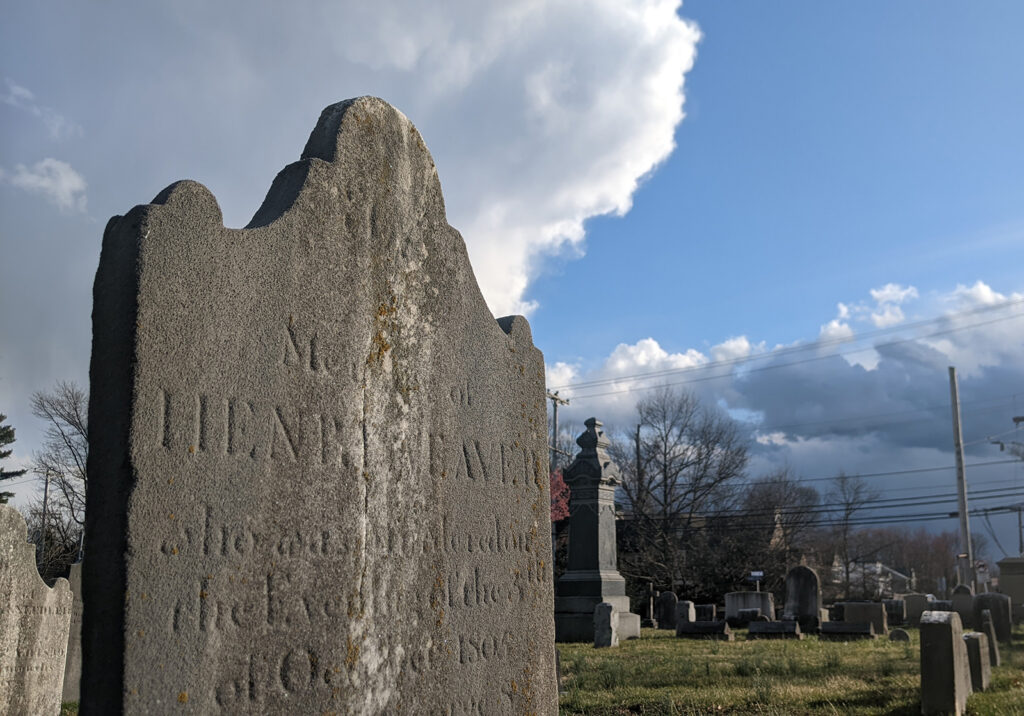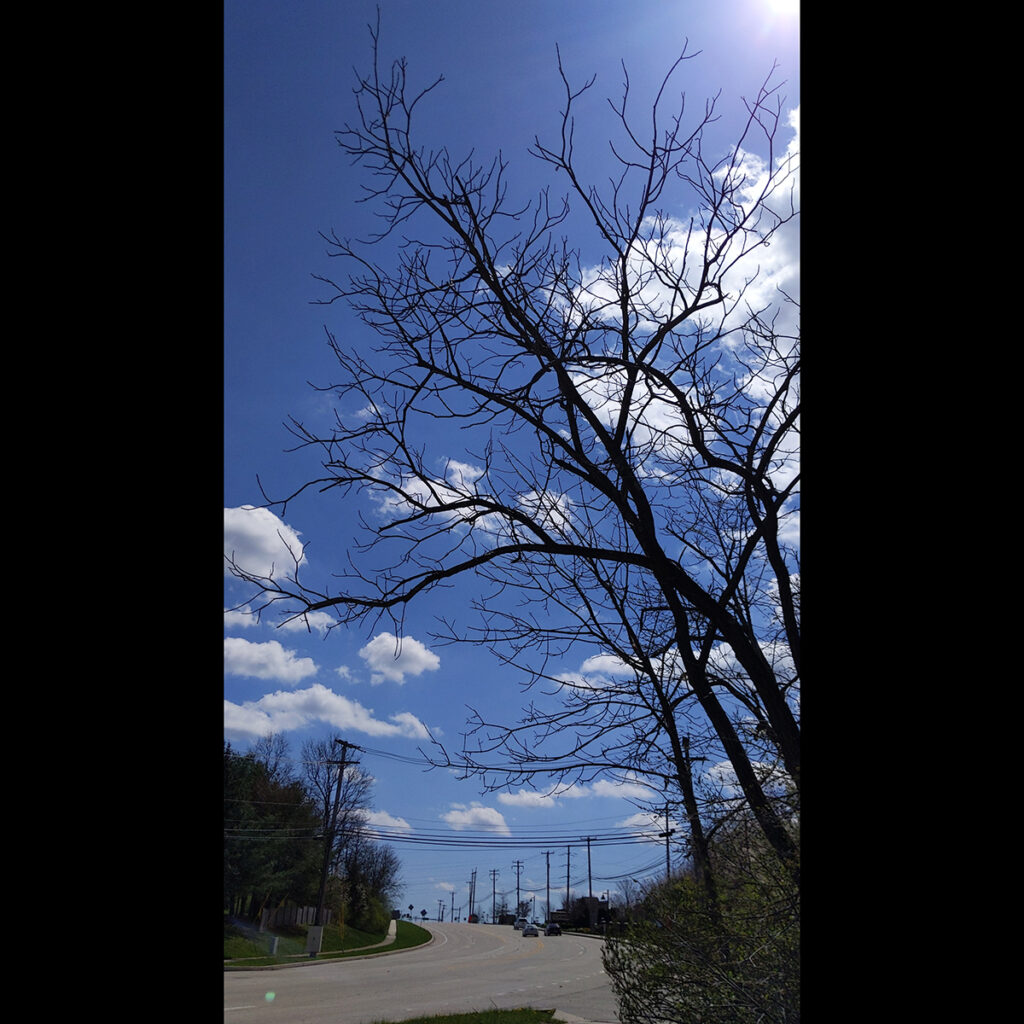Few of the residents of North Wales who visit the Lutheran Cemetery, at S. Main street and Prospect avenue, are aware of the fact that in this cemetery is buried the remains of a young man who met an untimely death at the hands of a killer over 200 years ago.
The present generation knows little of the tragedy that at the time was one of the big sensations of the country. All remembrance of the crime has been forgotten except the brief record on the tombstone which has withstood the ravages of time and remains a silent witness to the shocking death of a respected resident of this section of Montgomery county.
The following history of the murder of Henry Weaver and of the efforts to bring to justice his killer was taken from the North Wales Record newspaper of December 23, 1911:
Near the center of the Lutheran graveyard of North Wales, will be found a plain stone, the reading of whose inscription will cause the stranger to pause and ponder with wondering interest. It is to the memory of Henry Weaver and reads thus:
In
Memory of
HENRY WEAVER
who was Murdered on
the Evening of the 5th
of October 1805
Son of George &
Catherine Weaver
Aged 25 Years
6 Months & 25 Days
Referring to the minute book of the church we find only a brief mention of the mystery of his death. Two or three lines in German briefly say, “Henry Weaver was murdered — shot while following his team [of horses].”

The circumstances attending this tragic occurrence have almost faded from the minds of men of later generations. More two centuries have passed since the fatal deed was committed. For a long time it was remembered by a few of the aged, who were children at the time of its occurrence. But for the line engraved on this humble stone, the very fact would be unknown to the people of the present generation. The circumstances which can now only be gathered by the vague light of tradition are an untold story to the people living today.
George Weaver, the father of the man who was murdered, had long kept the tavern at Montgomery Square in Montgomery Township. [This crossroads village once stood at the corner of Bethlehem Pike and Upper State Road, about a mile south of “Five Points.”] George Kneedler lived in Montgomery Square also, and was the father of Henry Kneedler, who in more recent times lived near Gwynedd Square. In company with his brother-in-law, Kneedler was passing to the southwest of Montgomery Square, and saw Weaver’s wagon coming along the State road from Philadelphia and nearing home. Both Henry Weaver and his father had been to the city and their teams had parted company at the Spring House tavern, the son taking the longer but the better road [today’s Sumneytown Pike] because his wagon was loaded. The Bethlehem road was not yet a “Pike” (turnpike) and was – as most country roads were in 1805 – in rough condition. Kneedler and his companion spoke with Henry Weaver a few minutes as he walked behind his wagon and then they crossed the field to the southwest to another enclosure to cut buckwheat. It was near sundown of an autumn evening, October 5th.
They hardly had started their work when they heard the report of a gun. As this was nothing unusual, they paid no attention, but continued their employment until news came to them that Weaver had been shot. Weaver’s wagon was loaded with goods for his father’s store at Montgomery Square. He was shot in the head and breast while walking behind the team and mortally wounded. There was no sign that anything had been stolen. Blood was found not only in the road, but also upon the mane of one of the horses. It is supposed that finding himself rapidly losing strength and unable to walk Weaver had hoped to reach home by running around the wagon and mounting one of the horses. Being unable to do so he fell to the ground and soon after expired.
The horses quickly drew the wagon home. Two dogs which he owned sounded the alarm when they ran loudly barking to meet their master, whose voice would never more greet them.
Suspicion was at once aroused that some dire mishap had befell the driver by reason of his strange absence and parties quickly passed along the highway that the team had come and found the unfortunate man lying in the road dead. Upon investigation it was found that around a walnut tree that stood in a corn field to the east of the roadside had been collected quite a number of shocks of corn, forming a secure ambush. Behind this the killer had securely laid concealed before assailing the unsuspecting victim, who was expected to pass by the lonely place.
The countryside was less thickly settled and more densely wooded than now [much less – this was written in 1911 about something that happened in 1805]. The locality was over a half mile southwest of Montgomery square and two miles east of North Wales. It was on the roadside border of the property once held by Windover Nurseries, on its southerly side [today’s intersection of Dekalb Pike and Gwynmont Drive].

A strip of woodland by the roadside nearby had just been cleared, and the cord wood lay in measured piles. Ample time and facility was thus provided for the retreat of the murderer, before search could be made, protected as he was by the gloom of the early autumn evening.
We will continue with the story of the murder of Henry Weaver in our next installment.
This post is sourced from a column entitled Early North Wales: Its History and Its People penned by long-time North Wales resident historian Leon T. Lewis. The article appeared in its original form in the June 9, 1959 issue of the North Penn Reporter.
